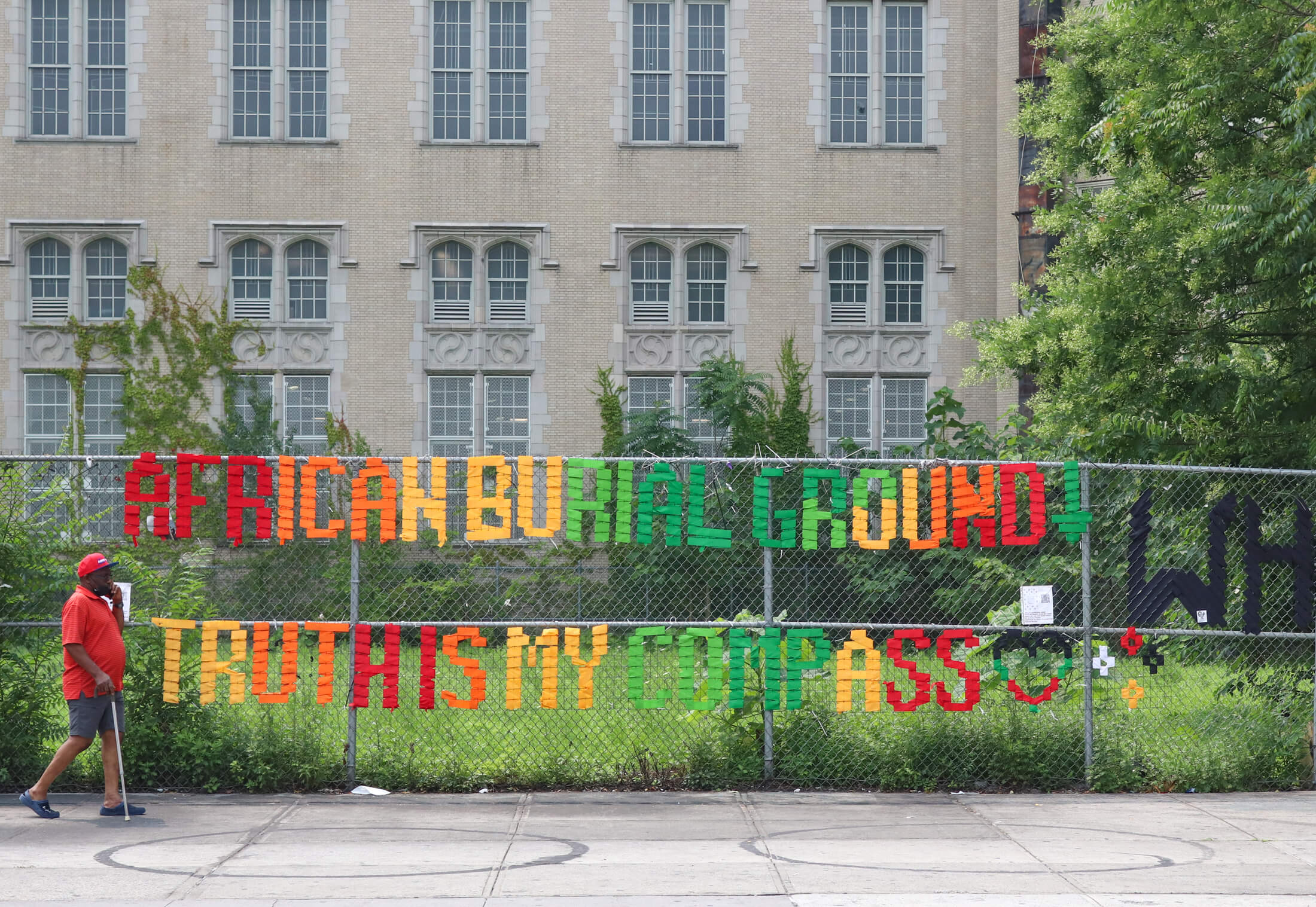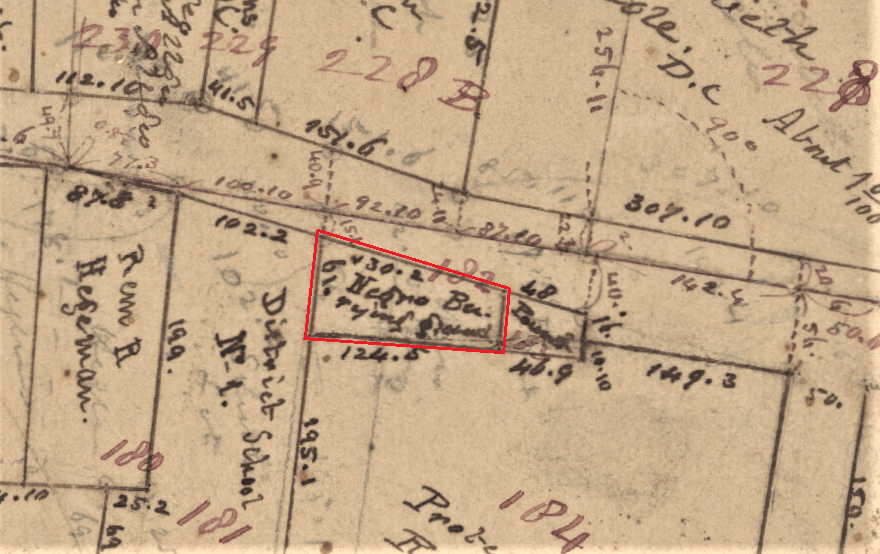Flatbush African Burial Ground Coalition Fights to Stop Development at Historic Site
The Flatbush African Burial Ground Coalition has been working every step of the way to make sure an historic African burial ground is preserved and honored.

Lifelong Flatbush resident Allyson Martinez of Flatbush African Burial Ground Coalition. Photo by Maya Brown
By Maya Brown, amNY
A chain-link fence on Church Avenue in Flatbush is covered in art, trespassing warnings, and homemade signs. The fence surrounds a block of dirt and grass that sits parallel to a gas station and catty-corner to a church. According to historians, beneath this block of dirt is an historic African burial ground.
Facing years of proposed development on the site, a group of community activists, the Flatbush African Burial Ground Coalition, has been fighting every step of the way to make sure the site is preserved and honored.
Lifelong Flatbush resident Allyson Martinez is the secretary of the coalition. She remembers walking past the lot as a child. Once she learned about the property’s history, Martinez knew it was necessary to view it as a cultural space of heritage and shortly after joined the coalition.
“The coalition was created by a bunch of artists, activists, and people,” Martinez said. “Just general residents coming together upon hearing about what was happening on these grounds here. And then after, we all realized there was a lot more work to do than just listening to workshops and looking at how things were going, and we needed to band together.”
Researchers say the lot is land originally inhabited by the Canarsie and Munsee Lenape indigenous people. After the Flatbush Reformed Church occupied the parcel from 1654 until the early 1840s, excavations then started uncovering bodies. An 1855 map of the area discovered in 2020 shows that the northeast portion of the lot was part of an African Burial Ground.

Despite the longstanding knowledge that the lot was a burial site for enslaved Africans, the now vacant site has yet to be memorialized.
“Flatbush has changed a lot over the years because of gentrification, but what it means to me and a lot of us, is it’s home,” Martinez said. “This is one of those spaces that creates that extra value and that we need to appreciate.”
In October 2020, former New York City Mayor Bill de Blasio proposed developing affordable housing and youth-focused programming on the site. However, the Flatbush African Burial Ground Coalition fought the city’s efforts and successfully halted construction plans.
Martinez said instead of adding something on top of the grounds, the coalition believes it should be memorialized and treated as a place of history.
Samantha Bernadine is the president of the coalition and also works at the school next door to the burial ground. Bernadine has been a leading part of the coalition for years and also teaches her students about the site’s history.
“Movements can move people and if the work that us as four individuals and all the others who have contributed and continue to contribute to this work, we will continue that work and hold people accountable,” Bernadine said.
The site is currently under the control of the New York City Department of Parks and Recreation.
“An ideal outcome for this Flatbush African Burial Ground would be designation, being formally recognized as a landmark, because the reality is we’re living in underserved communities that often don’t have their spaces valued and given the resources that are necessary,” Martinez said.

The coalition said they believe the space shouldn’t have anything built on top of it, but it should instead be preserved and open to the community. They envision a memorial with information on the lives buried there.
“The Black skin in this country is never respected,” Bernadine said. “The darker your pigmentation, you’re looked at as an ‘other’ and until we have truly honest conversations about race and how it has affected the lives of individuals here for generations and generations, we’re never going to get further.”
According to the New York City Department of Parks and Recreation website, an African Burial Memorial Site will be built on the grounds. The project is currently in the design stage but is expected to be completed in October 2024.
“When you want something to change, it’s not going to just change immediately,” Bernadine said. “It’s going to take time and you have to be in that fight continuously. This is just the beginning of an amazing journey of seeing what hurtful, harmful things that have been done to people of color and how we can triumph and be an amazing group of individuals.”
Editor’s note: A version of this story originally ran in amNY. Click here to see the original story.
Related Stories
- Councilman Backs Local Call for Memorial, Not Housing, on Flatbush African Burial Ground
- Flatbush Locals Celebrated Juneteenth With Art to Raise Awareness of African Burial Ground
- Brooklyn’s Freedom
Email tips@brownstoner.com with further comments, questions or tips. Follow Brownstoner on Twitter and Instagram, and like us on Facebook.









What's Your Take? Leave a Comment